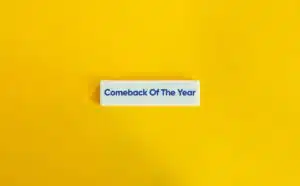Right. So. In my most recent blogs, we’ve talked about defining our goals for the year. About breaking them into bite-sized goals. Communicating them to our teams in a new way that engages both the head and the heart. And celebrating incremental wins along the way. Job done, right?
Bahahahahaaaa.
Seriously though. Just because a soccer player is passionately engaged in winning the World Cup doesn’t mean that person has the skills or talent to actually win. Once the passion for a goal is lit, as Courageous Leaders, we have to enable that win by ensuring our people have the necessary skills.
This goes so far beyond annual review sit-downs or even meaty career development plans. Sadly, and I feel your pain here, skill building is not a one-and-done activity that we can check off our lists.
Nope. Skill building is a cumulative activity. Like exercising. Flossing our teeth. And that face serum that says “use nightly” but (admit it) only gets put on sporadically. Sometimes on my knee. Because it looks a little dry.
Skill building is the essential oil of leadership activities.
Skill building is about waking up every morning and asking, “What can I do today to teach and refine my team’s skills so they can reach their goals faster?” Every conversation we have with an employee should move their skills forward.
One of the leaders I was privileged to work with as I was coming up in corporate America once told me, “If you spend time speaking with an employee and they don’t get better at their job, you’ve wasted your time and theirs.”
That’s why, in our Courageous Leadership programs, we teach bite-sized leadership techniques like: in-the-moment coaching, Courageous Conversations, inspiring communication, and more. These are leadership skills that enable greatness for everyone.
Skill building begins with ongoing “above it” analyses.
As leaders, we have a responsibility to see above the fray. We should be looking across our teams on a regular basis and considering what skills each person needs to acquire or refine in order to get better traction against their goals.
This skill-building leadership takes careful observation. We need to watch and listen. Notice that Alixandrah, for example, is struggling with THIS skill. Braxton could be better at THAT skill. And Kasi is great at another skill but could benefit from teaching what she knows to her teammate.
As we make these overview analyses, it’s important to think in specifics, not broad strokes. “Jordan needs to get better at selling” might be true, but stating it in such broad terms isn’t going to be very useful. We need to dig deeper. Watch more closely. What parts of the selling process are tripping him up? Finding the bite-sized skills within the larger skill category is the heavy lifting we need to do as leaders.
Once we’ve identified the larger skills, we need to break them down.
This year, at the Courageous Leadership Institute, we’re working directly with a few large retail organizations. One of the big a-ha moments for them has been this point about specificity. Simply telling people to “sell more” doesn’t work. But when we break the skill of selling into sub-skills, or steps, lightbulbs start going off all over the room.
Selling can be broken down into bite-sized pieces like proactive questioning to identify a customer’s needs. Proactive listening for opportunities to explain a feature. Learning to translate product features into benefits that are meaningful to a particular customer. Even simply knowing how or when to ask for the sale.
Think of it this way. If we just ask our teams to dance an Irish jig, chaos and hilarity will ensue, and we’ll likely be there for a while. If we break the dance down into specific steps and moves, we’ll get to the fun part a whole lot faster.
If you can’t figure out how to teach a skill, you’re probably thinking too big. Try breaking the larger skill down into steps, or sub-skills, and you’ll be on your way.
The secret is being so clear and specific, there is no room for interpretation.
One of the biggest issues we face, and part of why we’ve been so successful doing the work we do through the Courageous Leadership Institute, is that people talk in generalities.
“Get better at communicating,” we may say. But there are 7,000 things under that communication skills header. What is it, specifically, that thwarts the person’s attempts at communication? Something bite-sized, so small that good communicators barely notice they’re doing it?
Here’s a great example I see a lot …
A lot of us don’t like looking other people in the eyes, especially people who have a different perceived status. It feels uncomfortable. A little too bold, maybe.
How do we deal with that? We say, “Samantha, you don’t seem very present.” Or, “Axel, people don’t feel like you’re listening to them.” And Samantha and Axel go away feeling like they’re bad people.
Instead, we could be more clear, specific, and empowering. We could say, “Eye contact is a really useful piece of body language. When you know how to use eye contact, it’s like having selling superpowers. Let me help you put some things in place to create that habit.”
As Courageous Leaders, we’ll be much more valuable to our people if we home in on the one, single, specific little behavior we want our team members to do consistently that will help them get to the goal.
“Hey, Chris. Try thinking about the power of eye contact today. You’ll be amazed at how much easier your day goes!”
Skill building requires a leader to be “in it” as well as above it.
This is the essential oil that smooths the path to achieving our goals. If we want our teams to practice, acquire, and refine new skills, we’ve got to roll up our sleeves and get involved—every day.
That means every conversation with a team member can teach them something. We can consistently think of ways to inspire, engage, and enable them to be better, stronger, and faster than they were before the conversation happened.
And, as a bonus, we might not even be the ones who can teach those skills. Most of us have people on our teams who are masterful at certain specific skills. Why not call this out with some good old leadership praise, then engage them in helping their teammates become as expert as they are?
Team members helping team members gets both fully engaged. It’s a great way to keep “A” players energized while “B” players are catching up.
Bottom line? Nobody wants their tombstone to read, “She made her metrics” or “He hit his numbers.” The job of a Courageous Leader is to change people’s lives for the better. We want that slab to read, “She changed my life!” or “He transformed my career!” And the only way to do that is by helping our people win and get better, smarter, and more effective in their roles in tiny little increments every day.
WHAT’S NEXT? Right now, at Cindy Solomon & Associates, we are neck deep in Courageous Leadership training around goal setting, storytelling, and skills development. If you’re an executive or leader seeking guidance on how to engage and inspire your teams to perform beyond their wildest dreams, go to www.courageousleadershipinstitute.com to grab a webinar, workshop, or keynote customized to your organization’s specific needs.

Thanks for reading! KARMA POINTS: Take a minute right now to share this article with someone who needs to read it.
At the Courageous Leadership Institute, we leverage our work with over 300,000 leaders and employees from 400+ companies to offer leadership programs that impact results with customers and employees immediately.
Cindy Solomon is CEO of the Courageous Leadership Institute, a thriving global leadership training and research organization with access to up-to-the-minute insights on how today’s most innovative corporations are defining the future of business. She is also the author of two books, The Rules of Woo and The Courage Challenge Workbook.









